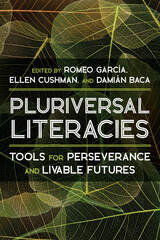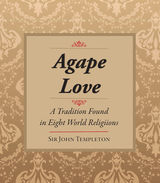
The tradition of agape, or unconditional love, is not exclusive to any religion. It is a primary underlying principle found in religions worldwide. The concept of altruistic love challenges the spiritual person to "love your enemies" or to "love without thought of return." It is a love that flows out to others through compassion, kindness, tenderness, and charitable giving.
Buddhists have a path of compassion, where caring for others becomes the motivating force behind existence. Hindus have a branch of yoga, the heart-centered path, that leads to enlightenment through an overwhelming love for God that takes the form of loving all humanity. Eastern religions, such as Taoism and Confucianism, see transcendent love as essential to true wisdom.
Love is a universal theme of love found in all religious traditions, Buddhist, Christian, Islam, or others. As we realize that all religions have this spiritual principle of love at their core, we can develop a sense of shared humanity. The religious tradition of agape love examined in this book will inspire those who are learning to grow in compassion and love for all people.
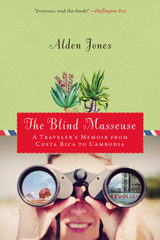
By way of explorations to Costa Rica, Bolivia, Nicaragua, Cuba, Burma, Cambodia, Egypt, and around the world on a ship, Jones chronicles her experience as a young American traveler while pondering her role as an outsider in the cultures she temporarily inhabits. Her wanderlust fuels a strong, high-adventure story and, much in the vein of classic travel literature, Jones's picaresque tale of personal evolution informs her own transitions, rites of passage, and understandings of her place as a citizen of the world. With sharp insight and stylish prose, Jones asks: Is there a right or wrong way to travel? The Blind Masseuse concludes that there is, but that it's not always black and white.
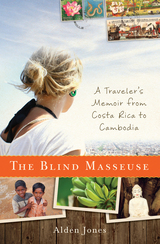
By way of explorations to Costa Rica, Bolivia, Nicaragua, Cuba, Burma, Cambodia, Egypt, and around the world on a ship, Jones chronicles her experience as a young American traveler while pondering her role as an outsider in the cultures she temporarily inhabits. Her wanderlust fuels a strong, high-adventure story and, much in the vein of classic travel literature, Jones's picaresque tale of personal evolution informs her own transitions, rites of passage, and understandings of her place as a citizen of the world. With sharp insight and stylish prose, Jones asks: Is there a right or wrong way to travel? The Blind Masseuse concludes that there is, but that it's not always black and white.

For De Pree, between being a girl and being a woman, there was starvation. Body Story is her intimate account of girlhood, virginity, anorexia, and motherhood. De Pree's prose is spare and unguarded, revealing in vivid flashbacks and poignant vignettes the sources of her inner pain.
In high school, the five-foot-ten De Pree weighed as little as 114 pounds. She was too weak to raise her arms above her head. “In a paradoxical way, I starved my body in order to understand my life,” she writes. “I had to place my body in suspension before I could move physically into sexuality. Starving allowed me to create an interim space between innocence and experience.”
De Pree renders the starkness of anorexia along with the process of recovery, relapse, and, ultimately, redemption. She also tells the story of the physical landscape, from her origins in the Midwest to the American South, Paris, and the vast New Mexican desert, as well as the psychic landscape of her body as it encounters the joys and challenges of maturation, childbirth, and motherhood.
De Pree offers readers a new way of understanding women¿s bodily experience, as she writes about the mystery and the meaning of her illness. As many as eight million Americans suffer from eating disorders. Body Story, unlike clinical reports or news accounts, illuminates the complexity of anorexia as the narrative moves toward a subjective and deeply personal truth.
This evocative and often radiant vision is a unique window into womanhood and selfhood in middle-class, contemporary America.
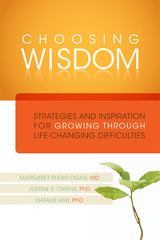
We all know the saying, “That which does not kill us makes us stronger,” but is that really true? After all, for some people, traumatic experiences ultimately lead to genuinely debilitating outcomes. For others, though, adversity does seem to lead to “post-traumatic growth,” where individuals move through suffering and find their lives changed in positive ways. Why does this growth happen for some people and not others? How exactly does it happen? Can the positive results be purposefully replicated?
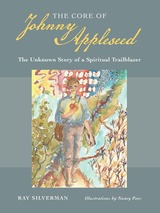
Recent biographies of John Chapman, better known as Johnny Appleseed, have portrayed him as anything from a schizophrenic wandering ascetic to a hedonistic pleasure-seeker. But who was the real man behind the misconceptions?
In this spiritual biography, Ray Silverman explores the stories and the popular misconceptions about Johnny Appleseed as well as the truths behind the legends. As a businessman, Chapman owned nineteen nurseries and twenty other land holdings throughout Pennsylvania, Ohio, and Indiana, brokering deals that belie the popular image of him as a wandering nomad with a tin pot on his head. But it is only once we talk about Chapman’s spiritual convictions that we come to the core of who he was: a thoughtful and also joyful Christian who was deeply moved by the writings of Emanuel Swedenborg.
The picture that emerges is of a lighthearted person whose convictions led him to seek harmony not only in nature but in the spiritual realms also—and to share his bounty with as many people as he could.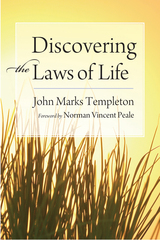
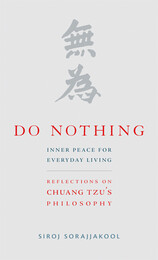
"Words,"writes Chuang Tzu, "are for catching ideas; once you've caught the idea, you can forget the words." In Do Nothing, author Siroj Sorajjakool lends us some of his insightful words to help us all "catch" the provocative ideas of one of China's most important literary and philosophical giants—one who emerged at a time when China had several such giants philosophizing on Tao or "the Way."
Though his thinking dates back to the fourth century, Chuang Tzu's Tao has profound implications for our modern lives. He welcomes an existence that is radically removed from the image of normalcy that society often projects, wherein the individual must always strive for more, always seek greater productivity, and always try to better him or herself and his or her place in life. Chuang Tzu would posit that the definitions of normalcy, success, and happiness are arbitrarily assigned and that our rigid and unquestioning adherence to these so-called "norms" leads to existential restlessness and unease. Instead of striving, he would say, be still. Instead of acquiring, embrace nothingness. Instead of seeking to understand the limitlessness of the universe during your brief and extremely limited existence, enjoy the wonder of it.
Siroj Sorajjakool suggests that when we can embrace nothingness, we undergo a spiritual transformation that liberates us to see more clearly and truly find ourselves. He offers a very personal exploration of Chuang Tzu's Tao, first in its historical and literary context, and then in the context of our twenty-first century existence. What emerges is a liberating and highly readable meditation on the many lessons we can "catch" from Chuang Tzu on how we view our aspirations, our joys and sorrows, our successes and failures, and what it means to be a worthwhile person.
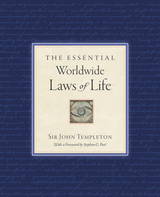
What does it mean to live a good life?
The major scriptures of the world, various schools of philosophical thought, storytellers, scientists, artists, and historians have all offered answers to this question. Surprisingly, these answers are common among nearly all sources. Famed investor and philanthropist Sir John Templeton called these commonalities the “laws of life.”
Templeton gathers the best of these teachings in The Essential Worldwide Laws of Life. This handsome volume shows readers of all ages, from all parts of the world, how to make their lives more joyous and useful by learning the universal truths that transcend time and culture.
Each law is presented in an essay format, with stories, commentary, and quotations to illustrate its importance. The material is designed to inspire the reader to put these laws into practice and to enjoy the rewarding life that will result.
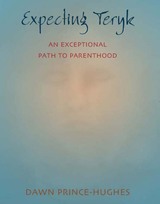
“Expecting Teryk is a rich and sumptuous work that speaks to the deeper realities and represents a unique viewpoint of experiences shared by all individuals who choose the path to parenthood.”—Disability, Pregnancy, and Parenthood
The period just prior to the birth of a child is a time of profound personal transformation for expectant parents. Expecting Teryk: An Exceptional Path to Parenthood is an intimate exploration, written in the form of a letter from a parent to her future son, that reclaims a rite of passage that modern society would strip of its magic.
Dawn Prince-Hughes, renowned author of Songs of the Gorilla Nation: My Journey through Autism, considers the ways being autistic might inform her parenting. She also candidly narrates her experience of becoming a parent as part of a lesbian couple—from meeting her partner to the questions they ask about their readiness to become parents and the practical considerations of choosing a sperm donor.
Expecting Teryk is viewed through the lens of autism as Prince-Hughes shares the unique way she sees and experiences the world—as well as her aching will to be fully present for her son. Contemplating the evolutionary traditions of parenting from both animal and human perspectives and the reassurances that nature offers, Expecting Teryk is a work of sensuous wonder that speaks to the deeper realities and archetypal experiences shared by all who embark on the journey of parenthood.
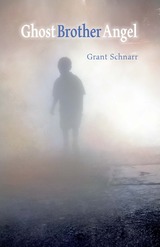
As a child, Grant Schnarr was haunted (as many children are) by a fear of the dark, a fear of the unknown, of monsters in his closet. But more than that, he was haunted by a real ghost—a dark presence that lingered in his family’s house, occasionally moving objects, making noises, or even appearing to unsuspecting family members and guests.
As an adult, Grant had almost forgotten about the ghost until a series of brushes with death began to awaken old memories. Over the course of several months, a series of “coincidences” led him to dig deeper and deeper into a long-buried family tragedy. Forced to confront his deepest fears, armed with the lessons he learned from the spiritual warriors in his life, he finally learns the truth on a dark night in the woods of Wisconsin.
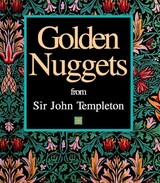
For young or old, rich or poor, this wisdom will find many applications in people's lives. This inspiring collection of time wisdom by Sir John Templeton, presented in a beautiful gift book, is perfect for a person seeking deeper meaning in life. Practical and uplifting advice based on a lifetime of experience is gathered in an attractive package for personal use or as a perfect gift. Juxtaposed to his sayings are short essays that elaborate on the ideas and make them easier to understand and apply. Themes, such as thanksgiving, forgiveness, positive thinking, love, humility, and happiness, arrange the thoughts.

The story of the garden unfolds through photographs and the words of survivors, first responders, family members, medical professionals, counselors, and members of the community. In only a matter of days, volunteers and local businesses transformed a vacant downtown lot into a serene urban oasis. Families and friends of those lost in the tragedy soon adopted each of the fifty-eight trees planted in honor of their loved ones, and visitors left behind colorful mementos, including painted rocks, photographs, and ornaments, as well as words of encouragement, love, loss, and strength.
In the aftermath of 1 October, an often misunderstood city revealed its soul under the most heartbreaking of circumstances. The inspirational voices and stories from a community touched by tragedy provide comfort and encouragement. And the organic response to the unthinkable is a testament to how one community came together at its darkest hour, chose hope over despair, unity over hate.
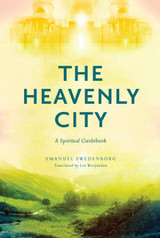
This new translation of De Novo Hierosolyma Et Ejus Doctrina Coelesti (alternatively translated The New Jerusalem and Its Heavenly Doctrine) by Emanuel Swedenborg presents the ideas of this Swedish visionary in simple, modern English. In the short work, Swedenborg discusses our motivations and inner natures, love and selfishness, and ways in which we can develop ourselves as spiritual people. He also covers different aspects of religion, such as the Bible, observances like baptism and the Holy Supper (Eucharist), the nature of heaven and hell, and how we can apply all these ideas to our daily lives.
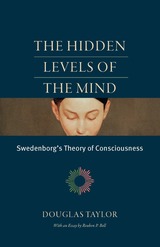
At the core of Swedenborg’s thought is the understanding that our purpose in this life is to progress spiritually—to learn, to grow, to do good works, and, ultimately, to allow as much of God’s love as possible to enter into us and manifest through us.
Scattered throughout his works are descriptions of our mind and how it relates to both the physical and spiritual worlds. In this book, Taylor pulls these loose threads together and weaves them into a simple, coherent whole, presenting Swedenborg’s teachings as a system that anyone can follow. Taylor describes the external or natural mind as primarily concerned with material things, and the inner mind, in its essence, as love. As we elevate our thoughts toward higher and higher types of love and wisdom, we draw closer to God and begin the process of regeneration, or rebirth as spiritual beings.
This is the first time in many decades that a book has been published on Swedenborg’s philosophy of the mind. Taylor’s straightforward commentary gives readers a rare insight into this crucial aspect of Swedenborg’s theology.
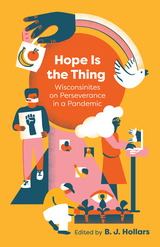
As the one hundred essays and poems gathered here demonstrate, hope comes in many forms: a dad dance, a birth plan, an unblemished banana, a visit from a neighborhood dog, the revival of an old tradition, empathy. The contributors are racially, geographically, and culturally diverse, representing a rough cross section of Wisconsin voices, from truck driver to poet laureate, from middle school student to octogenarian, from small business owner to seasoned writer. The result is a book-length exploration of the depth and range of hope experienced in times of crisis, as well as an important record of what Wisconsinites were facing and feeling through these historic times.

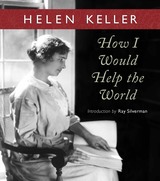
Swedenborg’s books are an inexhaustible well-spring of satisfaction to those who live the life of the mind. I plunge my hands into my large Braille volumes containing his teachings, and withdraw them full of the secrets of the spiritual world.
— Helen Keller, How I Would Help the World
This essay by Helen Keller expresses her deep gratitude to Emanuel Swedenborg, the Swedish seer, who had a profound influence on her spiritual life. In it she talks about the importance of love and truth in a world filled with materialism and selfishness, and the joy that comes from true understanding.
Her great advice on how she would help the world is to have people read Swedenborg’s writings and thereby overcome the many problems of the human condition. She states, “It would be such a joy to me if I might be the instrument of bringing Swedenborg to a world that is spiritually deaf and blind.” She further states that reading Swedenborg and understanding his words “has been my strongest incitement to overcome limitations.”
Her words are interwoven with photographs of her life and quotes from Swedenborg on spiritual topics. This book will be a treasure for readers who already know and respect Helen Keller and an inspiration for those who do not.

Although everyone has a story, not everybody has a remarkable storyteller like Donald Davis to tell theirs.
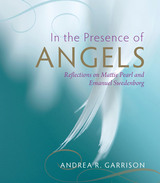
In October 2004, Andrea Garrison’s mother, Mattie Pearl, passed into the spiritual world. The weeks leading up to her crossing were a powerful time for Andrea and the rest of her family as Mattie Pearl shared her love, her insights, and her visions of heaven with those around her.
Andrea knew from the time she was a little girl that there was a spiritual reality beyond what we could see, and her mother encouraged her to explore different understandings of the Divine. As an adult, Andrea encountered the writings of Emanuel Swedenborg and was struck by the similarities between his theology and her experiences. Her quest to find others who knew about the Swedish mystic led her to new friends and, ultimately, a deeper exploration of her family history.
Originally published as The Crossing Over of Mattie Pearl, this expanded edition tells more about Andrea’s family history, including the role her father played in her life, as well as her reflections on Emanuel Swedenborg. Anyone who has mourned the loss of a loved one or been curious about the other side will be inspired and uplifted by this true story of a remarkable woman.
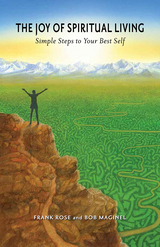
Through a series of eight exercises, readers learn how to raise their awareness and their spirits to a higher level, to connect more readily with their Higher Power, and to unlock authentic spiritual joy even at life’s most challenging moments. For people working in groups, the authors include suggestions for structuring spiritual growth meetings and tools for discussion facilitators. For individuals using the book alone, Rose and Maginel provide transcripts of their own group’s discussions, challenges, and “Aha!” moments, so the reader can share in the group experience.
Building on their previous book, The Joy of Spiritual Growth, Rose and Maginel offer more of the gentle wisdom and practical techniques that have made their spiritual growth program an enduring success.
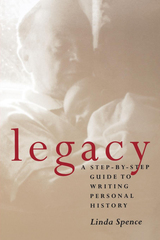
When Linda Spence asked her aging mother to write her life story, her mother stared at a blank sheet of paper and asked—“How? Where do I begin?” In this practical guide to capturing those memories that have been stored away, Linda Spence provides the questions that are the keys to unlocking the memories that make up a life.
Beyond the vital statistics are the personal stories that tell what it was like, what we did, and why we did it, how we feel about our choices, and what our circumstances were. Through encouraging coaching, shared memories, and open-ended questions, the process of producing a personal history becomes intriguing and engaging.
With Legacy the possibilities expand: a personal record is preserved—with its myths, traditions, joys, pains, gains, and losses; a family opens a potential dialogue that will last for generations; the writer has an opportunity for insight and resolution; the culture of a time and place is noted; the tradition of personal story is revitalized, and our present and future find nourishment and knowledge in the past.
Either as a gift that can act as a shared experience as the memories are recounted or as a personal way to take account of one’s experiences, often long since forgotten, Legacy is indeed a way to get one’s story down.
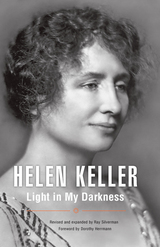
One of Time's women of the century, Helen Keller, reveals her mystical side in this best-selling spiritual autobiography. Writing that her first reading of Emanuel Swedenborg at age fourteen gave her truths that were "to my faculties what light, color and music are to the eye and ear," she explains how Swedenborg's works sustained her throughout her life.
This new edition includes a foreword by Dorothy Herrmann, author of the acclaimed Helen Keller: A Life, and a new chapter, "Epilogue: My Luminous Universe."
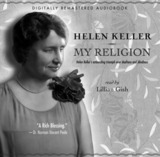
A woman who lived in silent darkness describes a world of love, light, and color. Where did Helen Keller find the strength and courage to break out of her silent and dark world and discover light? What inner resources of faith helped her overcome the limits of her physical body? In My Religion, this dynamic woman describes the spiritual odyessy that brought her to a faith that opened her spiritual sight.
This recording was originally made in 1960 by actress Lillian Gish and remastered for a new release.
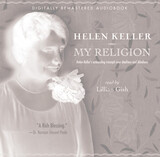
A woman who lived in silent darkness describes a world of love, light, and color. Where did Helen Keller find the strength and courage to break out of her silent and dark world and discover light? What inner resources of faith helped her overcome the limits of her physical body? In My Religion, this dynamic woman describes the spiritual odyessy that brought her to a faith that opened her spiritual sight.
This recording was originally made in 1960 by actress Lillian Gish and remastered for a new release.
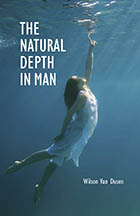
Psychologist Wilson Van Dusen explores the secret spaces of our inner world with clues drawn from his own personal experience, his work with psychiatric patients, and his study of Eastern and Western philosophy. Drawing from the insights of Swedish visionary Emanuel Swedenborg, Van Dusen discusses self-reflection, dreams, hallucinations, and the mystical experience.
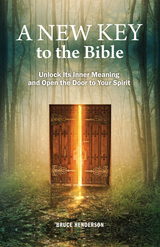
In his vast writings, eighteenth-century spiritual teacher Emanuel Swedenborg offers clarification: beneath the often-confusing literal text of the Bible is a clear inner meaning that directly points to an inclusive, always-loving, always-present God. In A New Key to the Bible: Unlock Its Inner Meaning and Open the Door to Your Spirit, author Bruce Henderson guides the reader through Swedenborg’s interpretation of the Bible, offering up a thought-provoking yet digestible way to understand the Creation story, as well as other famous parables such as Adam and Eve, Noah’s Ark, Abraham and Sarah, Moses, the life of Jesus, and the apocalyptic imagery of Revelation. At each step of the way, Henderson shows how these Scripture stories written thousands of years ago reflect our own spiritual paths and give meaning to the challenges we face along our journey in the present day.
For readers new to Swedenborg, A New Key to the Bible serves as an overview of the thousands of pages Swedenborg wrote about the inner meaning of the Bible. For spiritual seekers who feel a connection to the Bible but are sometimes troubled by its contents, Swedenborg reassures with a transcendent level of understanding about how God wants to inspire us through sacred text.
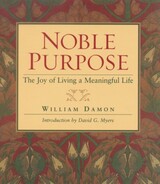
This book describes the personal and spiritual benefits of living life in a way that matters, with an awareness that one's life can reflect a sense of higher purpose no matter what the circumstances. The book draws upon religious, philosophical, and literary writings to show how humans in many cultures and historical epochs have pursued noble purposes by answering God's call as each hears it.
Noble purpose can be pursued both in heroic acts and in everyday behavior. The book shows how ordinary people—teachers, business professionals, parents, citizens—can ennoble what they do by being mindful of its deepest meaning. It also points out that humility is a necessary virtue for those who pursue a noble purpose. Great heroes are bold, courageous, and sometimes audacious in their determination to succeed; but they are also humble in their awareness of their own limitations. Moreover, a person must never violate basic moral laws while pursuing a noble purpose—the means must be as moral as the ends.
Purpose brings coherence and satisfaction to people's lives, producing joy in good times and resilience in hard times. It also presents a paradox: hard work in service of noble purpose that transcends personal gain is a surer path to happiness than the self-indulgent pursuit of happiness for its own sake. The closer we come to God's purpose for us, the more satisfied our lives become.
From the inspiration and examples conveyed in this book, we learn that all individuals have the capacity to discover their own God-given abilities, to learn the world's need for the services they can provide, and to experience joy in serving society and God in their special ways. As theologian Frederick Buechner writes, "The place God calls you to is the place where your deep gladness and the world's deep hunger meet."
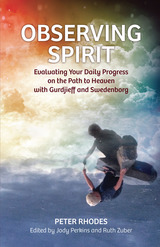
Based on the teachings of G.I. Gurdjieff, P.D. Ouspensky, Maurice Nicoll, and Emanuel Swedenborg, Peter Rhodes presents a practical guide to spiritual progress. Stressing personal responsibility for overcoming negative traits, each chapter explains how we can realize our true spiritual potential by cultivating awareness of our baser reactions and by applying the tools of Gurdjieff's spiritual method, "The Work," to our everyday existence.
Rhodes joins "The Work" with the spiritual philosophy of Emanuel Swedenborg to enhance our understanding of how the world of spirit intersects our lives on the earthly level. At the conclusion of each chapter, tools for measuring the reader's progress are provided in the form of weekly tasks and meditations. This book can be used in group workshops or by the individual.
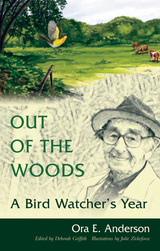
Out of the Woods: A Bird Watcher’s Year is a journey through the seasons and a joyous celebration of growing old. In fifty-nine essays and poems, Ora E. Anderson, birder, bird carver, naturalist, and nature writer, reveals the insights and recollections of a keen-eyed observer of nature, both human and avian. The essays follow the rivers and creeks, the highways and little-known byways of Appalachia, and along the way we become nearly as familiar with its numerous bird, plant, and animal species as with the author himself.
These are not the memories of a single year, however, but of a long lifetime spent immersed in the natural world. Out of the Woods, presented with humor and passion, is an account of a well-lived, productive, and satisfying life. The essays offer an intimate portrait of a half century of Anderson's life on his beloved old farm (more nearly a nature preserve), where he lived in harmony with birds and nature and followed the rhythm of the seasons. We are invited to share the joys—and the disappointments and sorrows—inherent in such a life.
Generously illustrated with Julie Zickefoose’s detailed and evocative drawings, this book will delight bird watchers, artists, naturalists, backyard gardeners, and anyone who is ever tempted to take a rutted, overgrown path just to see where it leads.
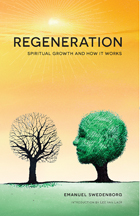
In his works, Swedenborg describes the two parts of our mind: the intellectual side that wrestles with questions of right and wrong, and the emotional side that drives us toward what we truly love. We are born with selfish impulses and desires, and while we may learn to act ethically, we don’t start growing as spiritual people until we transform our emotional side. That transformation, he says, happens from the outside in: first we decide intellectually to be more loving, and that decision leads us to choose consciously to act for the good of others. These external thoughts and actions gradually open us to a higher love, one that transforms our desires and ultimately our fundamental being. He calls this process regeneration.
Swedenborg discusses regeneration in many places throughout his prolific theological writings. This book brings his key teachings on this topic together in one volume, illustrating the process of becoming a spiritual being and discussing how and why that process works.
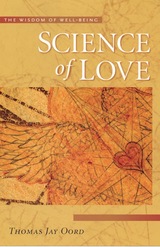
We all know the saying, "Love can change the world." When science looks at love, it considers cosmology, sociobiology, evolutionary psychology, neurology, sex and romance, and the role of emotions as each relates to love. It also explores religious, ethical, and philosophical issues, such as virtue, creation ex nihilo, progress, divine action, agape, values, religious practices, pacifism, sexuality, friendship, freedom, and marriage. All affect the ways in which people understand each other and interact with one another. In this book, Oord explores these varied dimensions of love, illuminating the love-science symbiosis for both scholars and general readers.
His definition of love is "to act intentionally, in sympathetic response to others (including God), to promote overall well-being. Love acts are influenced by previous actions and executed in the hope of attaining a high degree of good for all." He begins his study with an exploration of the role love plays in all major world religions: Hinduism, Buddhism, Confucianism, Judaism, Islam, and Christianity. He explains how divine love in action can be viewed as consonant with the big bang theory and the continual creation of the universe.
He looks at pacifism and concludes that nonviolence is not always the most loving thing (sometimes violence must be used to rescue victims or prevent holocausts). He explores the animal kingdom to see how creatures work together with the Creator to make the world a better place. And he analyzes the fundamentals of love, the basic characteristics of existence that must be present for love to be expressed. He concludes with the important argument that progress can best be made when religion and science work together to both understand and promote love.
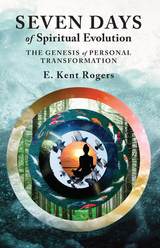
In Seven Days of Spiritual Evolution: The Genesis of Personal Transformation, Rogers responds to a growing movement of biblical literalism by turning to eighteenth-century spiritual teacher Emanuel Swedenborg, who wrote prolifically about how the deeper symbolic meanings of Bible text can provide spiritual guidance. Using Swedenborg’s language of correspondences, Rogers shows us how Genesis 1 describes our psychological landscape as it unfolds along the horizons of our inner journey toward God. He draws insightful parallels between the different stages of our spiritual growth and contemporary psychotherapeutic treatment—from person-centered to cognitive to behavioral therapies. To make the intangible tangible, Rogers accesses what he has learned as both a mental health counselor and spiritual practitioner to offer workable methods for improving how we think and behave on a daily basis.
Intended as a tool for anyone who is interested in personal and spiritual development, Seven Days of Spiritual Evolution weaves psychology, spirituality, and everyday experience into a practical approach to growth. “Faith isn’t about drawing lines in the sand or judging others,” Rogers says, “it’s about learning how to love others and to love God.” Ultimately, it’s about opening our hearts to the Bible as a useful and never-ending guidebook for God’s all-loving, redeeming, and merciful work in the world.
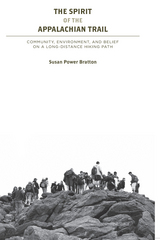
“Want to know what wilderness means to people who live it for over two thousand miles? Then read this extremely interesting, informative, intelligent, and thoughtful book.” —Roger S. Gottlieb, author of Engaging Voices: Tales of Morality and Meaning in an Age of Global Warming
“There is no doubt that Bratton’s book will be of value to students and scholars of leisure studies, recreation, and religion. Those who are familiar with the Appalachian Trail sense intuitively that a journey along its length kindles spiritual awakening; this book provides the hard data to prove it’s true.” —David Brill, author of As Far as the Eye Can See: Reflections of an Appalachian Trail Hiker
The Appalachian Trail covers 2,180 miles, passing through fourteen states from Georgia to Maine. Each year, an estimated 2–3 million people visit the trail, and almost two thousand attempt a “thru-hike,” walking the entire distance of the path. For many, the journey transcends a mere walk in the woods and becomes a modern-day pilgrimage.
In The Spirit of the Appalachian Trail: Community, Environment, and Belief, Susan Power Bratton addresses the spiritual dimensions of hiking the Appalachian Trail (AT). Hikers often comment on how their experience as thru-hikers changes them spiritually forever, but this is the first study to evaluate these religious or quasireligious claims critically. Rather than ask if wilderness and outdoor recreation have benefits for the soul, this volume investigates specifically how long-distance walking might enhance both body and mind.
Most who are familiar with the AT sense intuitively that a trek along its length kindles spiritual awakening. Using both a quantitative and qualitative approach, this book provides the hard data to support this notion. Bratton bases her work on five sources: an exhaustive survey of long-distance AT hikers, published trail diaries and memoirs, hikers? own logs and postings, her own personal observations from many years on the trail, and conversations with numerous members of the AT community, including the “trail angels,” residents of small towns along the path who attend to hikers? need for food, shelter, or medical attention.
The abundant photographs reinforce the text and enable visualization of the cultural and natural context. This volume is fully indexed with extensive reference and notes sections and detailed appendixes. Written in an engaging and accessible style, The Spirit of the Appalachian Trail presents a full picture of the spirituality of the AT.
Susan Power Bratton is professor of environmental studies. She is the author of Six Billion and More: Human Population Regulation and Christian Ethics, Environmental Values in Christian Art, and Christianity, Wilderness, and Wildlife: The Original Desert Solitaire.
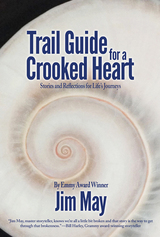
"A brilliant mixture of story, philosophy, humor and wisdom, this book reminds us that---if we are open to story, dreams, imagination, and myth---we can open doors within our soul."
—Jay O’Callahan, author, storyteller, and NPR commentator
A lifetime collection of stories, wise words, assembled musings and quotations about overcoming hurdles, elusive enlightenment, personal evolution, persistence in the face of discouragement, this pastiche is designed to encourage the downhearted, lift up the strivers, and add wings to the heels of spiritual seekers.
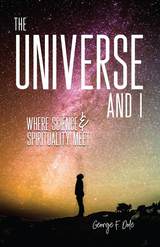
As experts continue to work out the relationship between cosmology and human evolution, Dole, who has spent a lifetime making sense of the spiritual world, joins the conversation with a clarity that only he can provide. Shaped primarily as a response to the scientific community, he engages with a wide spectrum of thinkers, including Stephen Hawking, Richard Dawkins, and eighteenth-century polymath Emanuel Swedenborg, just to name a few.
Accessing a wealth of knowledge from across a wide variety of disciplines—philosophy, religion, biology, physics, and more—Dole presents his own model for our physical and spiritual existence. Starting with what we don’t know and what we can observe about the fundamentals of existence, Dole explores “the creative tension between differentiation and integration”—the drive to be individual and yet be united to a greater whole, a tension whose persistent progress since the Big Bang has brought about such gifts as the emergence of life and consciousness.
Dole not only presents us with the empirical evidence of science but also provides us with a first-person understanding of the spiritual dimension and how it might inform the way we consider those grand speculations on the meaning of the universe and of life. Reflecting on how life began leads to questions of how we will continue to advance humanity and goodwill for all—both as a species and as individuals striving for personal growth.
Asking the question “How can I, infinitesimal I, have the gall to regard myself as significant in the context of the universe?”, Dole embarks on a journey that spans the life of the universe itself, making every effort along the way to answer this question—for all of us.
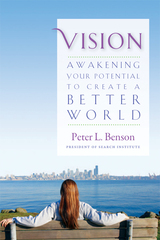
According to Peter L. Benson, the capacity to generate vision is among life's most beautiful and unheralded gifts. To him, a vision is more than just a goal, more than just a dream of what could be—it is a summons, a pull towards the future, an inspired call to make real that which should be. In Vision: Awakening Your Potential to Create a Better World, Benson takes readers on an uplifting exploration of this powerful concept.
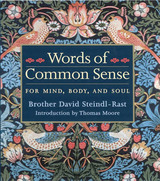
Brother David Steindl-Rast takes us on a journey to discover the wisdom preserved in common sense sayings that have been passed down through generations. These timeless words reflect the shared values cherished by people all over the world.
"When you drink from a stream,” says one Chinese proverb, “remember the spring." From these simple words we are reminded to be grateful for even the smallest graces that we receive. Another homespun phrase tells us that "a contented heart is a continual feast," reminding us to look within, rather than without, for the source of our happiness.
Words of Common Sense reveals the thread of human experience expressed in the world’s proverbs and sayings. It helps us connect with cultures other than our own and recognize our shared humanity. These words resonate around the world because they are timeless reflections on how to cultivate a life of love, gratitude, and meaning.
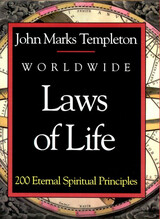
Worldwide Laws of Life is full of wisdom drawn from the major sacred Scriptures of the world and various schools of philosophical thought, as well as from scientists, artists, historians, and others. Its aim is to assist people of all ages to learn more about the universal truths of life that transcend modern times or particular cultures.
READERS
Browse our collection.
PUBLISHERS
See BiblioVault's publisher services.
STUDENT SERVICES
Files for college accessibility offices.
UChicago Accessibility Resources
home | accessibility | search | about | contact us
BiblioVault ® 2001 - 2024
The University of Chicago Press






